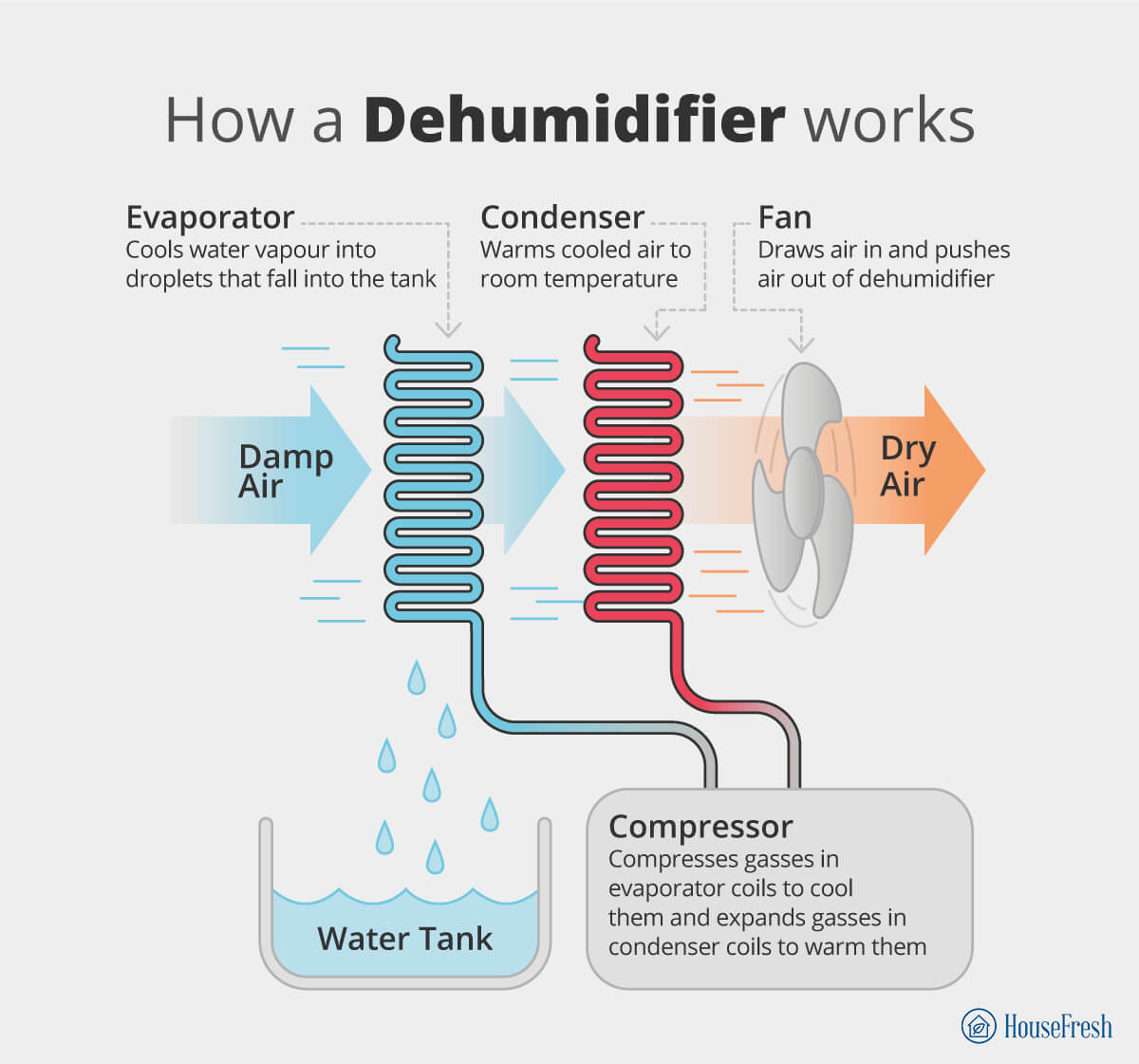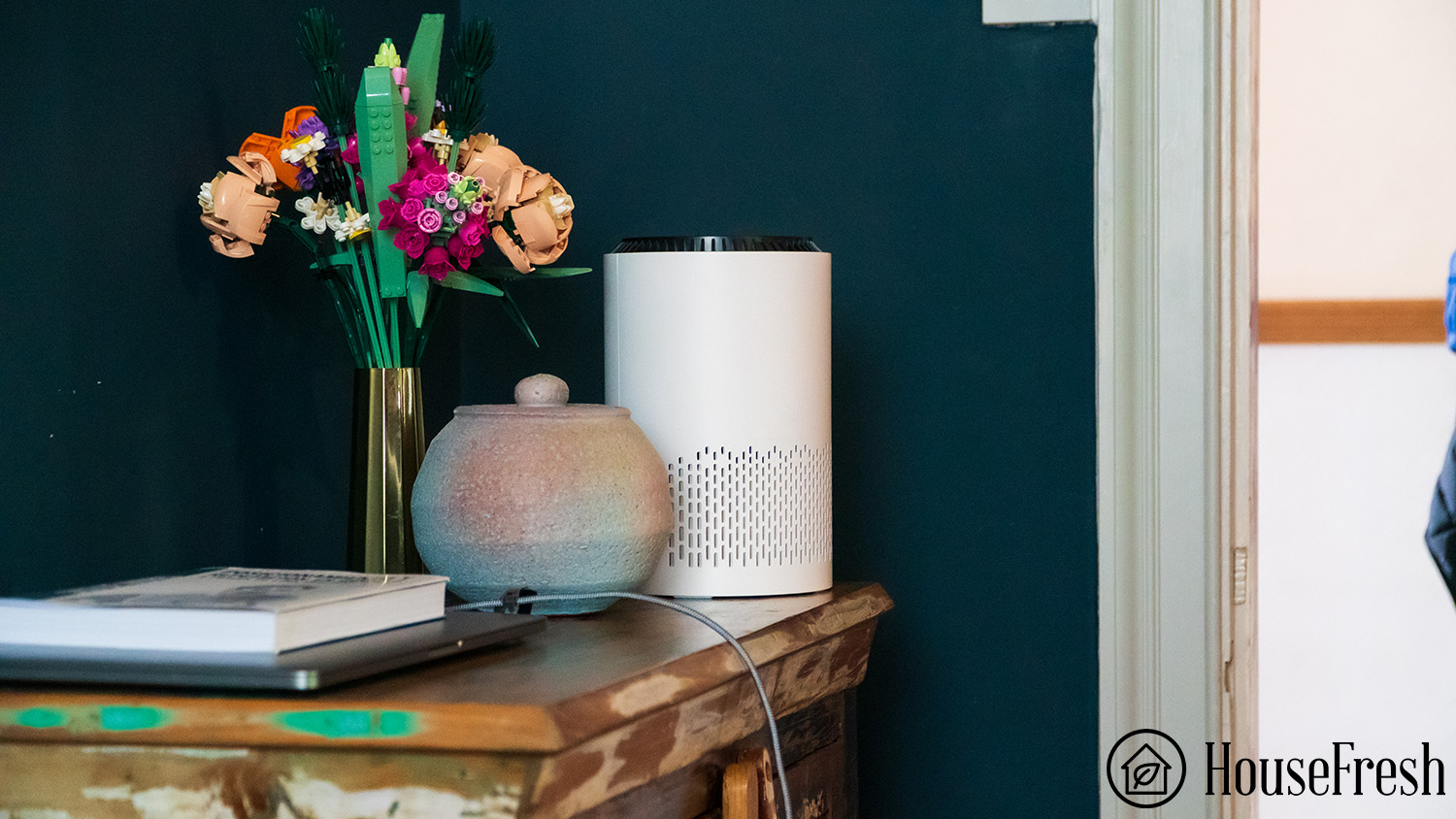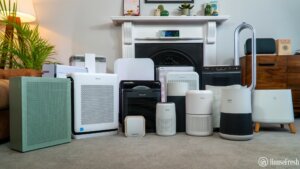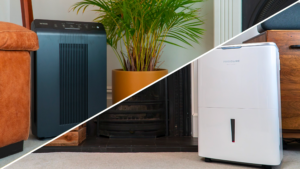Air purifiers can be an excellent tool for filtering the air you breathe in your environment. However, while running an air purifier, you may find that the air feels drier.
In this article, we’ll explain why it may feel like your air purifier is drying the air and what you can do to remove moisture.
Air purifiers clean the air — they don’t make it dry
Air purifiers work to clean the air around you by passing it through a variety of filters. The best models have activated carbon and HEPA filters to capture most particles and chemical gasses.
The various stages of cleaning the air with an air purifier are:
- Pre-filtration: Air is sucked into the unit and the pre-filter removes the larger particles from the air, such as dust, hair and pet dander.
- Activated carbon filtration: This filter removes VOCs and odors.
- HEPA filtration: This last filter removes the finest pollutants from the air, including bacteria, viruses, mold, pollen and smoke
- Clean air is then expelled from the air purifier back into your environment.
Air purifiers lack the appropriate mechanisms to absorb and condense the air’s moisture. So, air purifiers don’t dry the air.
Why does it feel like your air purifier is making the air dry?
It can feel like the air is drier when you run your air purifier, even if that’s not true. There can be a few reasons behind this.
When air purifiers are running, they circulate air through the room. This has the same effect as a fan. As a result, it can often feel like the air is drier when it is just moving. In addition, warm air feels more humid as it can hold more moisture. Warm air also rises, so you’re more likely to feel this in the upper levels of your home.
Cool air, however, often feels less humid and drier. You may feel this in the lower levels of your home. As you circulate air through your room using an air purifier, the air becomes cooler, which can lead to you believing that the air is drier. In reality, while running your air purifier, there is no change to the amount of moisture in the air unless you also run a dehumidifier. An air purifier cannot change the humidity in the air.
Finally, dry air is caused by cold air, naturally occurring in the cooler months. During the winter, when the outside air is naturally colder, it’s unable to hold as much moisture. Therefore, when the fresh air source in your home comes from the outside in the winter months, the air circulating in your home will naturally feel drier.
9 signs you might need a dehumidifier
So, now that you know that an air purifier won’t be able to remove moisture from the air: Do you need a dehumidifier instead?
Dehumidifiers draw warm air currents into their coils through a fan. This then contracts as it passes through the machine’s refrigerated coils, leaving condensation collected in a storage tank, one drop at a time. The machine then releases the cooler and drier air back into your environment.

Dehumidifiers are excellent tools, but how should you know if you need one? Here are a few tell-tale signs:
- Sign #1. Someone in your home has an excessively long allergy season every year
- Sign #2. If you’ve recently moved and your allergies are flaring up or seem worse than they were before.
- Sign #3. You can smell dampness persistently in your home.
- Sign #4. You have any leaks in your home after heavy rain.
- Sign #5. You notice that the air in your home feels muggy when you enter—this would mean that you see the water vapor in the air.
- Sign #6. Someone in your household is allergic to dust mites.
- Sign #7. You’ve noticed an increase in pests, such as spiders, cockroaches, moths, or silverfish.
- Sign #8. Your clothes smell damp or moldy, even after being freshly laundered.
- Sign #9. You can’t stop coughing or have a runny nose.
If you’re experiencing any or several of these, then it could be a sign that your house has an excess of moisture in the air. A dehumidifier would be able to help with this, thereby preventing mold and more serious problems from arising in your home.
Don’t worry, you don’t need to rush out and buy a dehumidifier for every room. By simply placing a dehumidifier in especially damp-prone spots, such as bathrooms and kitchens, you can help your overall home health.
Remember, dehumidifiers will not be able to clean the air, as they can only remove moisture from it. To clean the air, you will need an air purifier.
Final thoughts
Air purifiers may make it feel like the air is drier, thanks to cooler air and increased airflow. However, in reality, they do not affect the humidity in your environment. In order to remove moisture from your surroundings, you’ll need a dehumidifier for best results. If you would rather remove the moisture from your air naturally, you can reduce the humidity in multiple ways.
If, on the other hand, you’re finding that your environment is too dry, then you may want to consider looking into a humidifier. These work the opposite way to dehumidifiers by replenishing moisture in your environment. They can be particularly effective in dry environments such as desert regions.






